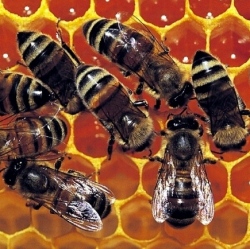
Agriculture in the Netherlands is wiping out wildflowers that bees depend on for pollen and nectar, so consequently their population numbers are falling. While this seems like the most obvious and simple explanation for why honeybees worldwide are dropping like flies, proving it has otherwise been difficult.
Different bee species rely on different plants. Pollen samples from old museum specimens now indicate that bees’ favorite meals are gone, taking these insects with them. According to the study, published in the journal Proceedings of the National Academy of Sciences, the United Kingdom has lost about 97 percent of its flower-rich grassland since the 1930s.
Bees help pollinate many wildflowers, allowing them to reproduce and return for food. Without this crucial pollination process plants don’t produce seeds, resulting in further declines in wildflowers, thereby impacting bees and contributing to this vicious circle.
"So far the identification of the key drivers of decline of bee populations has largely been based on speculation," wrote lead author Dr. Jeroen Scheper, of Wageningen University in The Netherlands, and his colleagues.
"We assessed the relative importance of a range of proposed factors responsible for wild bee decline and show loss of preferred host plant species is one of the main factors associated with the decline of bee populations in The Netherlands."
As technology and food demands call for increased agricultural farming, flowers are being mowed down, along 80 percent of bee habitat. Subsequently, species like the UK’s Cullem’s bumblebee (Bombus cullumanus) and the short-haired bumblebee (Bombus subterraneus) have become extinct.
And the Great yellow bumblebee and the Shrill carder bee, which are on the verge of extinction, may soon follow suit.
